Get a vehicle! That basically is all there is your say if you wanna stay on Vancouver Island – or Canada in general for that matter – for longer. Of course you can join the “there-is-no-need-to-leave-Victoria” crowd and stick with the awesome public bus system in Vic. But if you’re planning to really enjoy everything Vancouver Island has to offer, you’ll need that extra of freedom to actually GO places!
The vehicle I had been waiting for to try out over two weeks is a 2002 Land Rover Discovery – as close to my dream “car” Defender as I can possibly get in this lifetime. The missing water pump my used car dealer Marlin had ordered had arrived by the end of last week, but the test drive and follow-up check had to wait until there was a mechanic available to put the pump in. Now the big day has finally arrived and I’ll get the “Disco” on the road!
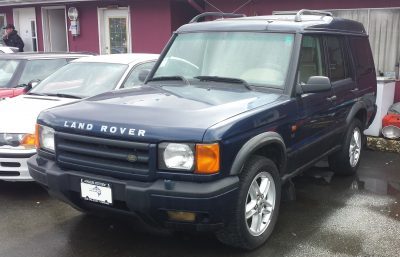
Find your perfect companion for the road!
When I first got here to stay and start my PhD program for Political Science at the University of Victoria in 2012, I took almost three weeks to get the vehicle I wanted. Before that, I got on the 66 commuter at 6 am in the morning every day, which took more than two hours to get from Duncan to UVic campus. Until I finally found my beautiful 2005 GMC Jimmy, a vehicle that was ticking all the boxes:
- less than $5000
- Four wheel drive or off-road-compatible
- low mileage (below 200.000km)
- roof racks
- big enough to sleep in with two people
- mint shape in and out for resale
- preferably GMC, Chevrolet, Honda, Subaru or Toyota (availability and price of parts)
To find a vehicle, you can either ask a trustworthy used car dealer (the two features might be mutually exclusive) or go for a private sale.
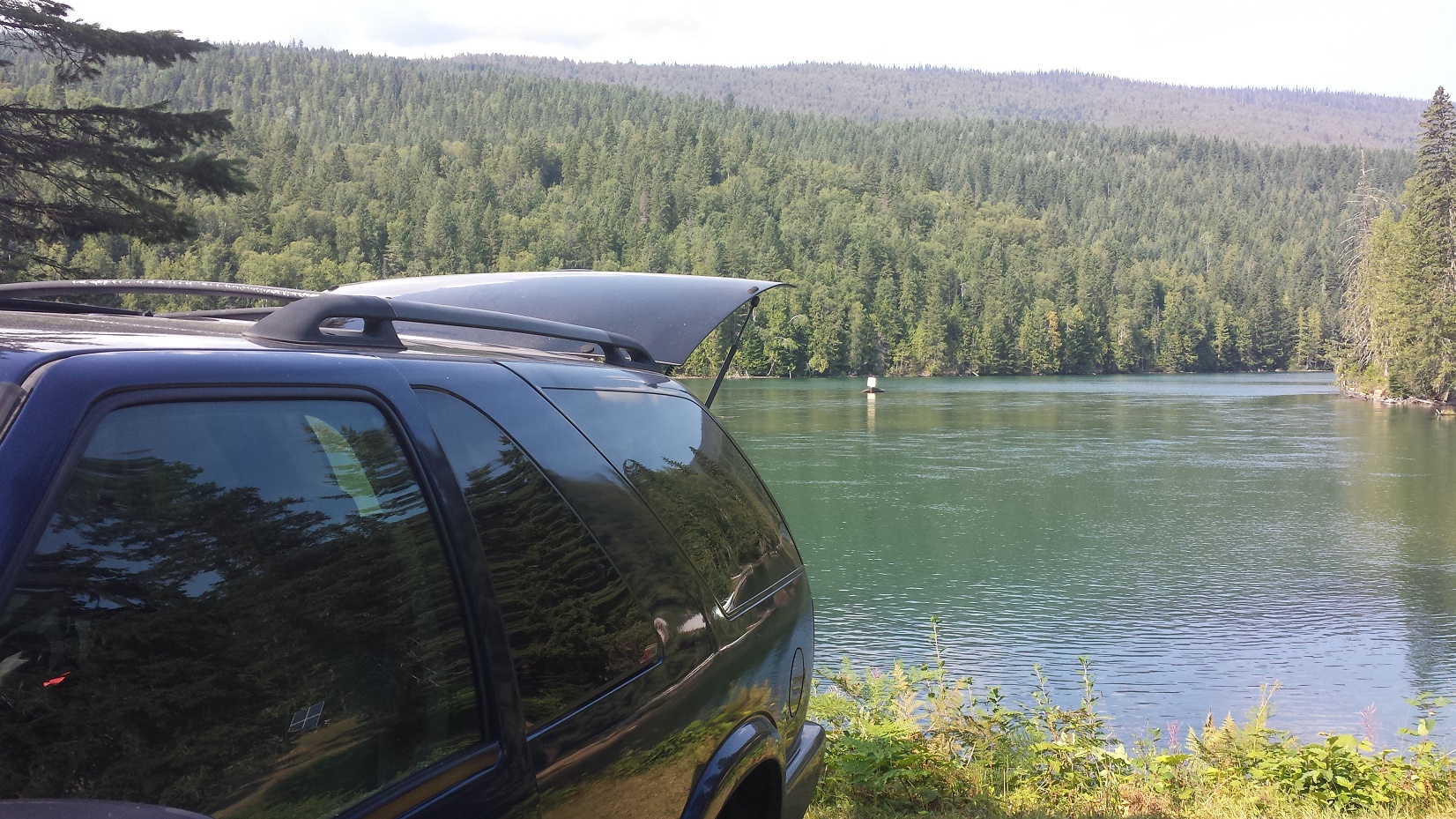
Finding a Vehicle: Some tips for the private sale
For the private sale, be prepared for A LOT of tales people are willing to tell you to sell their wreck for an unreasonable price. Either you already know a little bit about the vehicle you’re looking at and used cars in general, or you’ll need a friend with this knowledge to accompany you. You will have to figure out somehow whether a check-up is worth it at all or not! Otherwise you’ll spend way too much money on the check-ups alone. I am not a pro on the used cars, either, but in case you’re on a tight (er) budget with your purchase, these first ideas might turn out to helpful:
- I’ve always preferred to drive an SUV or Truck with a 4×4 option. There are many properties, but also gravel roads on the Island where you’ll need the four-wheel-drive in fall. In the winter time I strongly recommend having a solid 4×4 for the Malahat commute. This saved me a lot of trouble in rain and snow at night. Also, if you want to go to the mainland for outdoor adventures, this is what you want to buy. However, if you live in Victoria and just want to get around the Island, you’ll survive with a little smart car, too!
- Look for a “low-k” vehicle. Round here that means below 200.000 if your budget is up to $6000, below 150.000 if your budget is up to $8000 for SUVs and Trucks. (tax incl.)
- The age of the car isn’t the next important thing. For a reliable long-distance vehicle, you might want to look for something that is younger than 15 years so that the sensitive material of tubes and gaskets will not have suffered too much. The more important thing about age and mileage is rather whether the low-k are from sitting in a shed for ages or rather a senior driver who didn’t go on long road trips. THIS is what you’re looking for, because these vehicles usually have been well taken care of. If there is no history on the vehicle, your mechanic can still tell the difference between the two. Color matters, by the way. Burgundy, brown, gold and green are usually a good bet that it’s been a retiree car before – the favorite colors of senior drivers! Silver, black and metallics on the other hand usually draws less considerate, younger car owners. And: NEVER go for the white trucks – they’ve usually been company cars.
- Look for cars built in the U.S. (eg. Chevrolet, GMC) or the popular Asian brands (eg. Toyota, Hyundai, Subaru, Nissan) as the parts will be cheaper and more available. Among these, I’d avoid Dodge (they are awesome, but parts don’t last as long) and Ford (short for “Found On the Road Dead”, pretty much true, at least for used Ford SUVs…)
- Check the 17-digits-identification number of the vehicle (VIN). It is a unique number holding information about the year, brand and mileage of the vehicle. Most importantly, you can find out about any accidents the vehicle might have been involved in. You’ll find the VIN in the top or bottom left corner on the vehicle’s dashboard (from the inside) and oftentimes the driver’s door or post, and the firewall under the hood. All of these numbers have to match. Also, you can inquire about any accidents for free online .
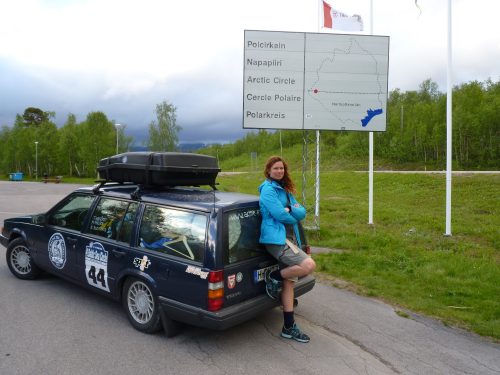
Finding a Vehicle: Some Tips for Dealing with your Used Car Dealer
All things considered you will probably save a lot of money buying from a private seller. However, Canadian federal and state consumer-protection laws only apply to sales of used cars by dealers to consumers, not to sales by private sellers to consumers. Once you’ve sealed the deal with a private seller, there is not very much you can do, if the vehicle is not at all what you bargained for!
My most favorite used car dealer on the Island is Marlin from Marlin Motors. He’s well established, knowing almost everyone and everything about any vehicle kicking round in the area, as he and his staff just LOVE cars. He does not sell “good as new” used cars, mind you. However, if you have a little bit of time on your hands, he will be looking out for the vehicle you have I mind, fix it for you and be able to offer you a good deal. Before you buy the car though, always run it through an independent mechanic as well – there is only so much one mechanic can see and do, right?
What else you can do: Proper Test-Drive and Independent Mechanic
For both options, used car dealer and private sale, and regardless of how much you like your used car dealer, you’ll go for an extended test drive, preferably with some car-loving friend of yours. Also, you’ll need a reliable mechanic to make sure you won’t break down on your first trip over the Malahat. Apart from many awesome smaller places around Duncan and Victoria, I can more than recommend the service at KalTire. You’ll find almost 30 workshops around the Vancouver area and they offer a thorough check-up for your future vehicle for just 60$. The money is well spend, as you can be sure about the standard of the checkup and they’ll let you know what has to be fixed to keep the car running. Also, if you have to bring several vehicles, you could ask for a discount on the second and third check-up.
The Sale: Cash is still a Thing
When you’ve finally been able to rule out all unpleasant surprises, you’ll have to start talking about the price. My recommendation is that you might inquire a little in between about what the seller might want to have, but don’t make an offer before you actually really consider buying the vehicle – it’ll save you and the seller a lot of time and trouble. Look up similar vehicles online and how much people would ask for them and deduct about 20 per cent of the online asking price, as this is what your specific vehicle would go for in a private sale (include year and mileage in your considerations). Also, against everything we have seen these past two decades with regards to checking and online-banking, it’s still cash that will give you the benefit of the doubt as a potential buyer – especially if there is other people placing an offer. (same is true when you decide to sell your car again). So as soon as you’re thinking about talking about the price, get the cash before you start bargaining. You’ll be able to give the final price another push in your favor while leaving the seller still satisfied with the deal.
Seal the Deal: Involve the Insurance Broker and don’t forget the Taxes
I didn’t know anything about buying or selling a vehicle in Canada before I had to do both of these things just by myself, I did a little bit of research and started asking my friends. The best bet for either buying or selling privately is always to include the ICBC office, the BC Crown Corporation insurance broker or the local equivalent.
This is what the ICBC website recommends for your vehicle purchase:
- Get the original vehicle registration, with the owner’s signature on it, from the seller.
- Fill out the purchaser’s portion of the Transfer/Tax Form (APV9T).
- To complete the transfer, take these documents to an Autoplan broker. We strongly recommend going together with the seller.
Most important Lesson about Used Vehicles: Kill your Darlings
So you’ve found your dream vehicle and all was fine on your extended test drive. Well, maybe not everything. When I took the Discovery on the road, heart pounding and excited, I could already feel that the steering was heavy and slow. On the highway the automatic transmission was not shifting in at the right engine speed and the engine was extremely loud at speeds between 80 and 110 km/h. Still, I loved driving the beautiful beast and decided to take it to the mechanic. Maybe the bad handling and everything else wouldn’t be too big of a problem?
After a couple of hours of nervous excitement, I got the mechanic’s report back – and he actually had to talk me through it for about twenty minutes. There was almost no section without a red marking (green is alright, orange is recommended to be fixed, red means that the thing HAS to be fixed due to safety reasons). Practically every fluid there was in the car was leaking, including the transmission fluid and oil – and probably had been so for quite some time. Brakes, bushings, and tires would have to go all at once. Landrover parts are among the most expensive and engine problems at some point turn out to be fatal when you’re somewhere far away from any mechanic. I had to face it: This “Disco” would not be my first Landrover.
How I got my first “Beamer” instead
I needed a reliable vehicle. One that could be fixed within a day and that I could resell with a good price after a couple of months. All of that was not about to happen with the “Disco”. I went back to Marlin to take the other vehicle I had been looking at on the road once more: A 2003 BMW X5.
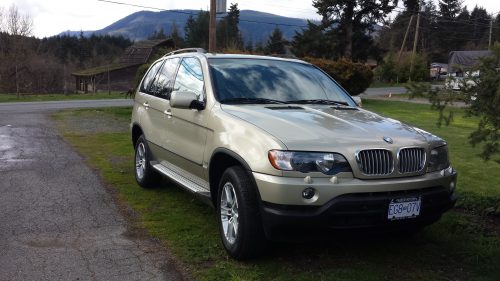
As a teenager, I just loved the BMWs. Over the years I have outgrown them a little and now I prefer the “rougher” designs and less sophisticated models. Also, when the X5 was launched in 1999 it got a lot of disappointed press – for BMW fans, its 1,6 tons were considered to heavy, its handling too sluggish. Off-road fans criticized it for not being an actual off-roader (no monocoque body, no independent suspension). So all in all, I was quite reluctant to drive “German” car in North-America (the X5 are manufactured in th U.S. by the way). However, the X5 is being produced in its third generation by now, so there must be some good reasons for this. I got almost all of them during my test drive.
Especially compared to the “Disco”, the “Beamer” (that’s the nickname for BMWs here) is just an awesome drive: Engine and transmission are smooth and quiet. With its V8, 4,6l engine with 235 kW (320 PS), merging on the highway is absolutely stress-free, as you can speed up from zero to traveling speed in the blink of an eye. (The official time from 0 to 100 is 6,1 s. Naturally, the X5 is a gas guzzler when you’re doing this, but the it is comparable to other vehicles this size on longer trips, with about 15l/100km.) On the rougher gravel roads and along the steep hills around the Cowichan Valley, its bulky shape stubbornly sticks to the road even at higher speeds. And that Beamer is 14 years old! The X5 is an SUV that you actually can drive on any bad pothole or gravel road without worrying too much about getting to your destination. Clearly, it is not the most adventurous-looking vehicle out there – but the X5 is probably the most classy way to drive up north this summer!
And what would you favorite road companion look like?
Did you enjoy the article?
Don’t miss the next post in the series: The Vancouver Island Logbook #3 – How to get around when you stay: Get a vehicle!
Read more in this series:
The Vancouver Island Logbook #1 – How to get there
The Vancouver Island Logbook #2 – How to get around when you travel
Read more about Vancouver Island: Winter surfing in Tofino and Ucee!
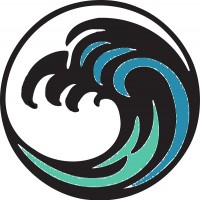 Doyoudare.
Doyoudare.
The Work-a-Hippie-Blog
What is this blog about? Find out here…
Wanna read more content in English? This is where you’ll find it!

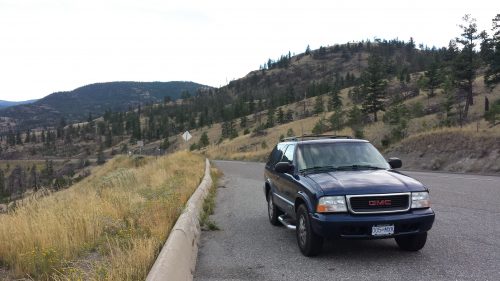
in the blink of an eye i read the whole letter.awesome.. i love it